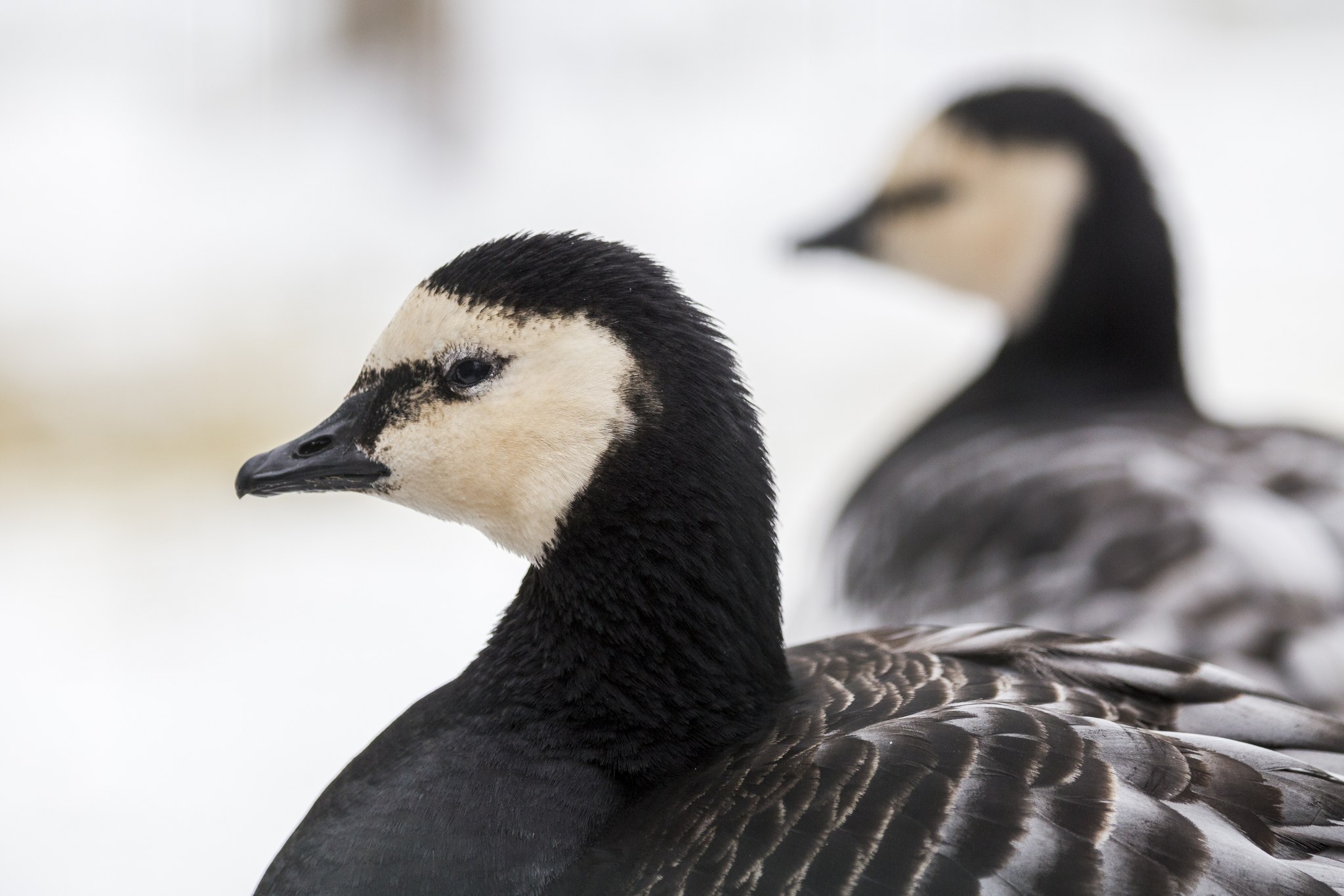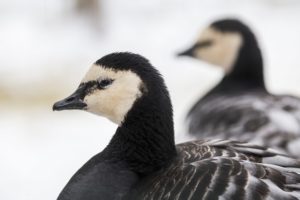
Barnacle goose
LIVING HABITS
The Barnacle Goose is an arctic species deriving from the northern islands in Russia, the Spitsbergen, and Greenland. It has been found breeding around the Baltic Sea regions since the 1970’s and in Finland since the 1980’s. Nowadays the Barnacle Goose breeds mainly on our southern coastlines, but has been found nesting all the way up to the inland areas of Oulu. Barnacle Geese frequently build their nest high on arctic mountain cliffs and rocky sea areas in their original habitat. They often build their nests close to sea bird colonies. Nowadays they may also nest in parks and city areas. Barnacle Geese feed on grass, leaves, grains, and corn. They feed in large flocks on farmlands and grazing lands.
PROTECTION
Hunting done around the Barnacle Geese breeding, and wintering areas, and migration routes was about to bring the species population into extinction worldwide in the 1900’s. In the 1960’s, the Barnacle Goose became a protected species in many countries. Nowadays, the Barnacle Goose is on the critically endangered species list in Europe, and a protected species in nature conservation areas in Finland.
ADAPTING TO WINTER
The Barnacle Goose in Siberia and the Baltic Sea regions migrate to the Netherlands, the individuals in Greenland and the Spitsbergen to the British Islands.
Barnacle goose
Branta leucopsis
Class: Aves – Birds
Order: Anseriformes – Ducks
Family: Anatidae – Mallards, Geese And Swans
Size: Weight: 1,5-2kg, wingspan: 130-140cm.
Breeding: Female lays 4-5 eggs, incubation period: 24-25 days and nights. Independent their first winter, sexual maturity reached in 3 years.
Lifespan: According to ringing data, the oldest barnacle goose has lived to 24 years of age.


Did you know…
Did you know, that the Barnacle Goose population found in the Baltic Sea regions derive from zoo collections? When escapees from the zoos nested in the region, they attracted their wild relatives on the migration routes to come and stay around the Baltic Sea regions.




